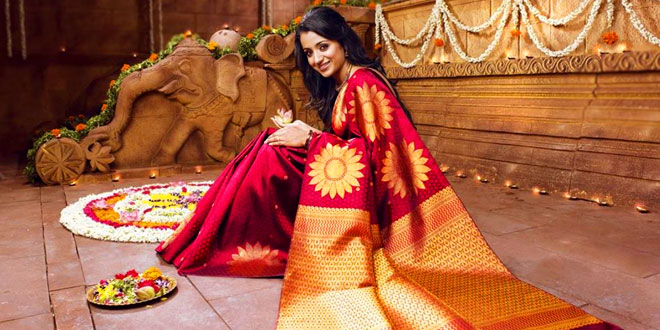Question: Which moral values were ignored by the strict social and food dress codes of the 19th century India?
Answer:
- Equality
- Freedom
Question: Mahatma Gandhi, used to spin charka and wear khadi clothes. Which moral values is being reflected in this act of Gandhiji?
Answer:
- Self reliance
- Simplicity
Question: 1. Mention any two reactions of women to Victorian norms of clothing.
2. Mention any two moral values you have learnt from such a reaction.
Answer:
- (a) By the 1830s women in England began agitating for democratic rights. As the suffrage movement
developed, many began campaigning for dress reforms.
(b) Women’s magazines described how tight dress and corsets caused deformities and illness among young girls. - (a) Right to protest.
(b) Right to speak or write.
Question: “Styles of clothing in France emphasized differences between men mid women”. Explain.
Answer:
- Women in Victorian England were groomed from childhood to be docile and dutiful, submissive and obedient. The ideal woman was one who could bear pain and suffering. While men were expected to be serious, strong, independent and aggressive, women were seen as frivolous, ‘delicate, passive and docile.
- Norms of clothing reflected these ideals. From childhood, girls were tightly laced up and dressed in stays. The effort was to restrict the growth of their bodies, contain them within small moulds. When slightly older, girls had to wear tight fitting corsets.
- Tightly laced, small-waisted women were admired as attractive, elegant and graceful. Clothing thus played a part in creating the image of frail, submissive Victorian women.
- The ideals were in the air they breathed, the literature they read, the education they had received at school and at home. From childhood they grew up to believe that having a small waist was a womanly duty. Suffering pain was essential to being a woman. To be seen as attractive, to be womanly, they had to wear the corset. The torture and pain this inflicted on the body was to be accepted as normal.
Question: ‘The cloth we wear can be used to disintegrate or unite the society’. Explain by giving examples.
Answer:
- The Sumptuary laws prevailing in France were used to disintegrate the society as these laws forbade socially inferior people wearing certain clothes.
- Many Indian nationalists decided to search for a national dress to promote national unity.
- Mahatma Gandhi used cloth as a symbolic weapon against British rule.
- The Nairs an upper caste attacked women of the Shanar caste for wearing a cloth across their upper bodies.
Question: Why are 19th and 20th centuries important in the history of clothing?
Answer: Before the age of democratic revolutions and the development of capitalist markets in eighteenth-century Europe, most people dressed according to their regional codes, and were limited by the types of clothes and the cost of materials that were available in their region. Clothing styles were also strictly regulated by class, gender or status
in the social hierarchy.
After the eighteenth century, the colonization of most of the world by Europe, the spread of democratic ideals and the growth of an industrial society, completely changed the ways in which people thought about dress and its meanings. People could use styles and materials that were drawn from other cultures and locations, and western dress styles for men were adopted worldwide. The French Revolution transformed many aspects of social and political life. The revolution also swept away existing dress codes, known as the sumptuary laws. Let us look briefly at what these laws were.
Question: What were sumptuary laws?
Answer: In medieval Europe, dress codes were sometimes imposed upon members of different layers of society through actual laws which were spelt out in some detail. From about 1294 to the time of the French Revolution in 1789, the people of France were expected to strictly follow what were known as ‘sumptuary laws.’ The laws tried to control the behavior of those considered social inferiors, preventing them from wearing certain clothes, consuming certain foods and beverages (usually this referred to alcohol) and hunting game in certain areas. In medieval France, the items of clothing a person could purchase per year was regulated, not only by income but also by social rank. The material to be used for clothing was also legally prescribed. Only royalty could wear expensive materials like ermine and fur, or silk, velvet and brocade. Other classes were debarred from clothing themselves with materials that were associated with the aristocracy. The French Revolution ended these distinctions.
The members of the Jacobin clubs even called themselves the ‘sans culottes’ to distinguish themselves from the aristocracy who wore the fashionable ‘knee breeches’. Sans culottes literally meant those ‘without knee breeches’. From now on, both men and women began wearing clothing that was loose and comfortable. The colours
of France – blue, white and red – became popular as they were a sign of the patriotic citizen. Other political symbols too became a part of dress: the red cap of liberty, long trousers and the revolutionary cockade pinned on to a hat. The simplicity of clothing was meant to express the idea of equality.
Question: How were sumptuary laws protect the home production against imports?
Answer: Some sumptuary laws were passed to protect home production against imports. For instance, in sixteenth-century England, velvet caps made with material imported from France and Italy were popular amongst men.
England passed a law which compelled all persons over six years of age, except those of high position, to wear woolen caps made in England, on Sundays and all holy days. This law remained in effect for twenty-six years and was very useful in building up the English woolen industry.
 Class Notes NCERT Solutions for CBSE Students
Class Notes NCERT Solutions for CBSE Students






Very good – Improved a lot.